-
 Bitcoin
Bitcoin $77,582.7508
-2.72% -
 Ethereum
Ethereum $1,484.8733
-4.90% -
 Tether USDt
Tether USDt $0.9991
-0.06% -
 XRP
XRP $1.8190
-6.84% -
 BNB
BNB $558.9330
-0.67% -
 USDC
USDC $0.9998
-0.06% -
 Solana
Solana $105.8173
-3.99% -
 Dogecoin
Dogecoin $0.1474
-4.02% -
 TRON
TRON $0.2294
-2.85% -
 Cardano
Cardano $0.5677
-7.00% -
 UNUS SED LEO
UNUS SED LEO $9.1640
1.91% -
 Toncoin
Toncoin $3.0205
-3.48% -
 Chainlink
Chainlink $11.3410
-3.03% -
 Avalanche
Avalanche $16.3752
-6.49% -
 Stellar
Stellar $0.2205
-7.38% -
 Shiba Inu
Shiba Inu $0.0...01104
-2.53% -
 Hedera
Hedera $0.1502
-8.41% -
 Sui
Sui $1.9322
-6.31% -
 MANTRA
MANTRA $6.1619
-1.24% -
 Bitcoin Cash
Bitcoin Cash $273.1447
-3.59% -
 Litecoin
Litecoin $71.3781
-2.06% -
 Dai
Dai $0.9999
-0.04% -
 Polkadot
Polkadot $3.4140
-6.57% -
 Ethena USDe
Ethena USDe $0.9986
-0.07% -
 Bitget Token
Bitget Token $4.0704
-2.58% -
 Hyperliquid
Hyperliquid $12.2616
1.62% -
 Pi
Pi $0.5705
-2.24% -
 Monero
Monero $196.1775
-4.56% -
 OKB
OKB $51.6798
-1.63% -
 Uniswap
Uniswap $4.8529
-6.54%
What is a Layer 2 solution for a blockchain?
Layer 2 solutions, like state channels, rollups, and sidechains, enhance blockchain scalability by processing transactions off-chain, reducing fees and increasing speed while maintaining Layer 1 security.
Mar 11, 2025 at 12:35 pm
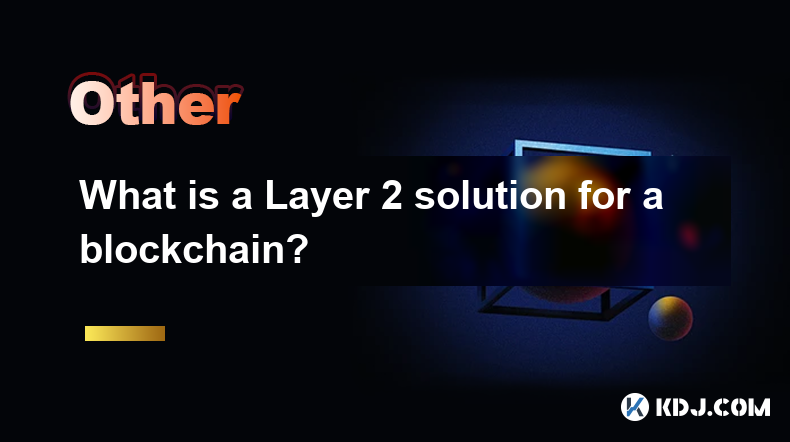
What is a Layer 2 solution for a blockchain?
Key Points:
- Layer 2 solutions are technologies built on top of existing blockchains (Layer 1) to improve scalability, reduce transaction fees, and increase transaction speed.
- They achieve this by processing transactions off-chain before submitting a summarized batch to the main blockchain for final settlement.
- Several different types of Layer 2 solutions exist, each with its own strengths and weaknesses, including state channels, rollups (optimistic and zk-SNARKs), and sidechains.
- Choosing the right Layer 2 solution depends on the specific needs and priorities of the blockchain network. Factors to consider include transaction throughput, security guarantees, complexity of implementation, and development costs.
Understanding Layer 2 Solutions: A Deep Dive
The title question, "What is a Layer 2 solution for a blockchain?", points to a crucial challenge facing many blockchain networks: scalability. Blockchains, while revolutionary in their design, often struggle to handle a high volume of transactions. This limitation stems from the inherent nature of blockchain technology: each transaction must be validated and added to the blockchain by a network of nodes, a process that can be slow and resource-intensive. This results in high transaction fees (gas fees) and slow confirmation times, hindering the widespread adoption of blockchain for many applications.
Layer 2 solutions address this scalability problem by moving a significant portion of the transaction processing off the main blockchain (Layer 1). This "off-chain" processing allows for significantly faster and cheaper transactions while still maintaining the security and decentralization of the underlying Layer 1 blockchain. Think of it like this: Layer 1 is the main highway, while Layer 2 is a network of efficient expressways built alongside it, relieving congestion on the main road.
Let's explore this in more detail by examining the different types of Layer 2 scaling solutions:
State Channels: Imagine a private, temporary blockchain created between two or more participants. This is the essence of a state channel. Instead of broadcasting each transaction individually to the main blockchain, participants execute multiple transactions within this channel. Only the final state of the channel – the net result of all the transactions – is written to the main blockchain. This significantly reduces the number of transactions on Layer 1, resulting in lower fees and faster confirmation times.
State channels are particularly well-suited for frequent, small-value transactions between a known set of participants, such as micropayments or in-game transactions. However, they require participants to remain online and actively engaged throughout the channel's lifespan. Furthermore, the number of participants in a single channel is often limited, and setting up and managing channels can be relatively complex. The security of state channels also relies on the integrity of the participants involved, meaning a malicious actor could potentially manipulate transactions within the channel before the final state is submitted to the main chain. Nevertheless, their efficiency in handling recurring interactions between a small group makes them a valuable tool in specific applications. The complexity involved in managing multiple channels and the need for constant online participation might present challenges for broader adoption. The security considerations, while generally well-managed, require careful design and implementation to prevent malicious manipulation. Despite these limitations, the reduced transaction fees and increased speed offered by state channels make them a strong contender in the Layer 2 landscape, particularly where the characteristics of the use case align well with the technology’s strengths.
Rollups: Rollups represent a different approach to Layer 2 scaling. Instead of creating separate channels, rollups bundle multiple transactions into a single transaction, which is then submitted to the main blockchain. This "rollup" significantly reduces the number of individual transactions that need to be processed on Layer 1. There are two primary types of rollups: optimistic rollups and zk-SNARK rollups (Zero-Knowledge Succinct Non-Interactive Arguments of Knowledge).
Optimistic rollups assume that all transactions within a rollup are valid unless proven otherwise. A fraud-proof mechanism is in place to challenge potentially invalid transactions. If a fraudulent transaction is detected, the entire rollup is reverted, and the fraudulent transactions are removed. This approach offers a relatively simple implementation, but it requires a waiting period to ensure the validity of transactions before they are finalized on Layer 1, potentially introducing some latency.
In contrast, zk-SNARK rollups utilize cryptographic proofs to verify the validity of transactions without revealing the transaction details themselves. This approach offers significantly faster finality and stronger security guarantees compared to optimistic rollups. However, zk-SNARKs are computationally intensive, making their implementation more complex and resource-demanding. The generation of these cryptographic proofs can be a significant bottleneck, potentially offsetting some of the performance gains. The trade-off between speed, security, and complexity necessitates careful consideration when choosing between optimistic and zk-SNARK rollups. The choice often depends on the specific application and the priorities of the developers. The increased complexity of zk-SNARKs is balanced by their enhanced security and faster finality, making them an attractive option for applications requiring high throughput and strong security assurances. The computational intensity of generating zk-SNARK proofs remains a challenge, however, and continuous research is focused on improving the efficiency of these cryptographic techniques.
- Sidechains: Sidechains operate as independent blockchains that are linked to the main blockchain. Transactions are processed on the sidechain, and a bridge mechanism is used to transfer assets and data between the sidechain and the main blockchain. Sidechains offer a high degree of flexibility and customization, as they can be designed with different consensus mechanisms and transaction processing rules than the main blockchain. However, they also introduce security risks, as the security of the sidechain is independent of the main blockchain. The bridge mechanism itself can be a point of vulnerability, requiring robust security measures to prevent attacks. Moreover, the transfer of assets between the sidechain and the main chain can introduce latency, diminishing some of the performance advantages. The choice to utilize a sidechain represents a trade-off between flexibility and security, and it necessitates a thorough risk assessment. The independent nature of sidechains allows for experimentation with different blockchain designs and functionalities, but it also requires careful consideration of the security implications. The bridging mechanism, while essential for interoperability, requires rigorous security protocols to prevent exploitation.
Each of these Layer 2 solutions offers unique advantages and disadvantages. The optimal choice depends on the specific requirements of the blockchain application, including the desired transaction throughput, security guarantees, complexity of implementation, and cost considerations. A thorough understanding of these factors is crucial for selecting the most appropriate Layer 2 scaling solution.
FAQs
Q: What are the main benefits of using Layer 2 solutions?
A: The primary benefits of Layer 2 solutions include significantly increased transaction throughput, drastically reduced transaction fees, and faster transaction confirmation times. These improvements address the scalability limitations of many Layer 1 blockchains, enabling them to handle a much higher volume of transactions without compromising security or decentralization.
Q: Are Layer 2 solutions secure?
A: The security of Layer 2 solutions varies depending on the specific type of solution employed. While they aim to leverage the security of the underlying Layer 1 blockchain, each type has its own security mechanisms and potential vulnerabilities. State channels rely on the integrity of the participating parties, optimistic rollups utilize fraud proofs, and zk-SNARK rollups employ cryptographic proofs. Sidechains present a different security model entirely, with their own independent security considerations. A comprehensive security analysis is necessary for each Layer 2 solution to assess its robustness against various attacks.
Q: How do Layer 2 solutions interact with Layer 1?
A: The interaction between Layer 2 and Layer 1 varies depending on the specific Layer 2 technology. In state channels, only the final state of the channel is written to Layer 1. Rollups submit a summarized batch of transactions to Layer 1. Sidechains utilize a bridge mechanism to transfer assets and data between the sidechain and the main blockchain. In all cases, the final settlement and security of transactions ultimately rely on the underlying Layer 1 blockchain.
Q: What are the limitations of Layer 2 solutions?
A: Layer 2 solutions are not without limitations. State channels require participants to remain online, and their scalability is limited by the number of participants. Optimistic rollups have a waiting period before finality, and zk-SNARK rollups have high computational costs. Sidechains introduce security risks and may suffer from latency during cross-chain transfers. The choice of a Layer 2 solution involves trade-offs between various factors, and no single solution is perfect for all use cases.
Q: Which Layer 2 solution is the best?
A: There is no single "best" Layer 2 solution. The optimal choice depends on the specific requirements of the blockchain application, such as transaction throughput, security needs, complexity of implementation, and cost constraints. Each type of Layer 2 solution has its own strengths and weaknesses, and the best approach varies depending on the specific use case. A careful evaluation of these factors is crucial for selecting the most appropriate Layer 2 scaling solution.
Disclaimer:info@kdj.com
The information provided is not trading advice. kdj.com does not assume any responsibility for any investments made based on the information provided in this article. Cryptocurrencies are highly volatile and it is highly recommended that you invest with caution after thorough research!
If you believe that the content used on this website infringes your copyright, please contact us immediately (info@kdj.com) and we will delete it promptly.
- Hedera (HBAR) Price Forms Bullish Falling Wedge, Targeting $0.30 Breakout
- 2025-04-09 21:10:13
- HBAR Mess Has Set the Stage for Something Explosive
- 2025-04-09 21:10:13
- The Best Meme Coin to Buy Now Might Not Be One You Recognize
- 2025-04-09 21:05:12
- Royal Canadian Mint Issues $1 Circulation Coin Commemorating the 150th Anniversary of the Supreme Court of Canada
- 2025-04-09 21:05:12
- Could bitcoin withstand the flames spewed by Donald Trump
- 2025-04-09 21:00:12
- Mastercard and Ripple (XRP) Rumored Partnership Doesn't Go as Deep as Many Think
- 2025-04-09 21:00:12
Related knowledge
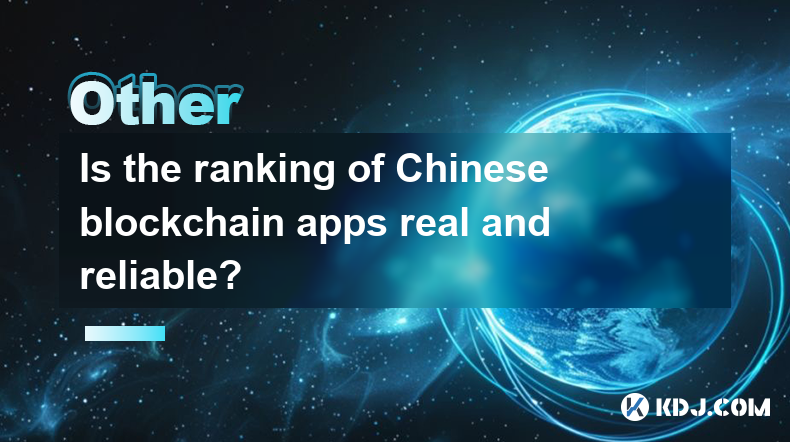
Is the ranking of Chinese blockchain apps real and reliable?
Apr 04,2025 at 09:01pm
The ranking of Chinese blockchain apps has become a topic of interest for many in the cryptocurrency community, as it provides insights into the popularity and adoption of blockchain technology within China. However, the reliability and authenticity of these rankings are often questioned. This article aims to delve into the factors that influence these ...
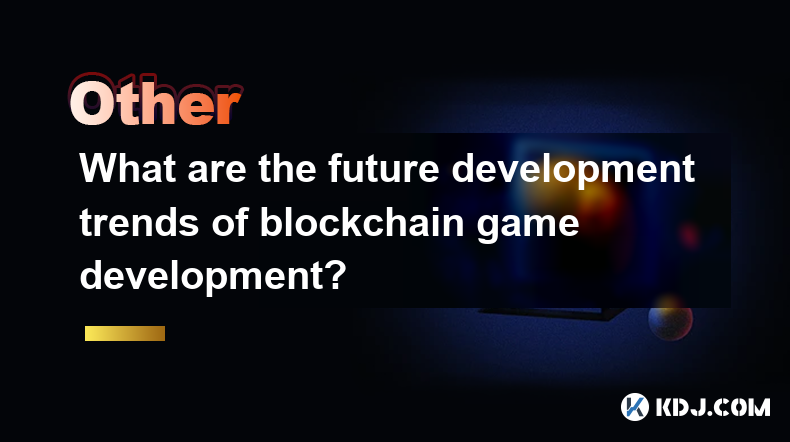
What are the future development trends of blockchain game development?
Apr 03,2025 at 05:00am
Blockchain technology has revolutionized various industries, and gaming is no exception. As we look to the future, several trends are set to shape the development of blockchain games. These trends not only promise to enhance the gaming experience but also to integrate blockchain technology more seamlessly into the gaming ecosystem. Let's explore these t...
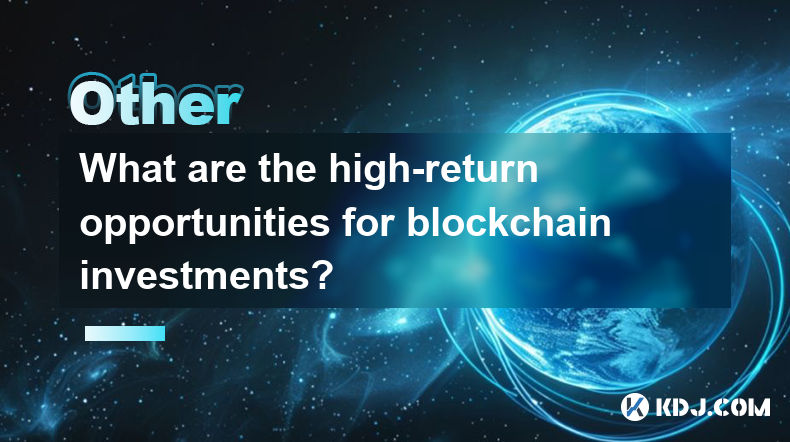
What are the high-return opportunities for blockchain investments?
Apr 05,2025 at 02:35pm
Blockchain technology has revolutionized the financial world, offering numerous high-return investment opportunities. These opportunities span various sectors within the cryptocurrency ecosystem, including cryptocurrencies, decentralized finance (DeFi), non-fungible tokens (NFTs), and blockchain startups. Each of these areas presents unique risks and re...
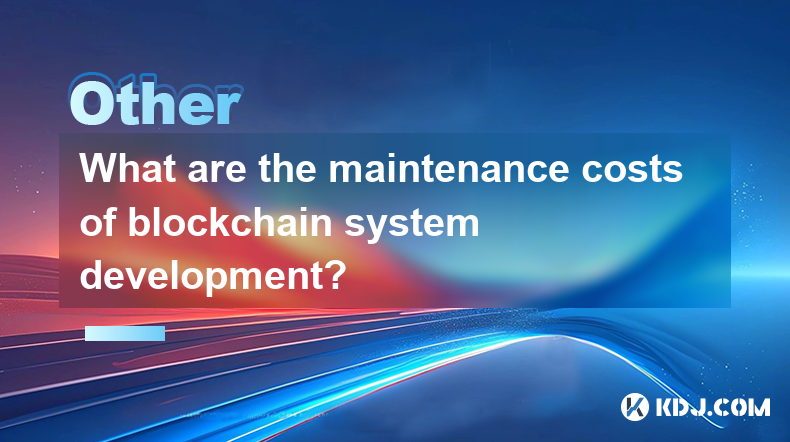
What are the maintenance costs of blockchain system development?
Apr 03,2025 at 06:07pm
The maintenance costs of blockchain system development are multifaceted and depend on various factors. These costs can include technical maintenance, security updates, infrastructure expenses, and personnel costs. Understanding these elements is crucial for anyone planning to develop or maintain a blockchain system. Technical MaintenanceTechnical mainte...
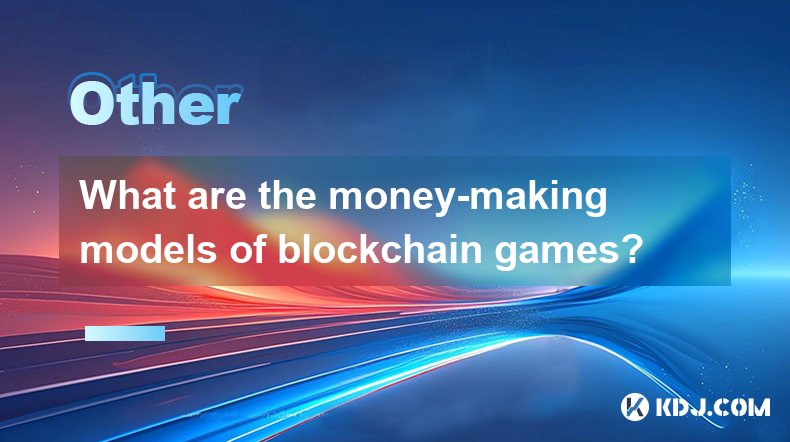
What are the money-making models of blockchain games?
Apr 04,2025 at 02:00pm
Blockchain games have emerged as a revolutionary way for players to earn real money while enjoying their favorite pastime. These games leverage the power of blockchain technology to create unique money-making models that benefit both the players and the developers. In this article, we will explore the various money-making models of blockchain games and ...
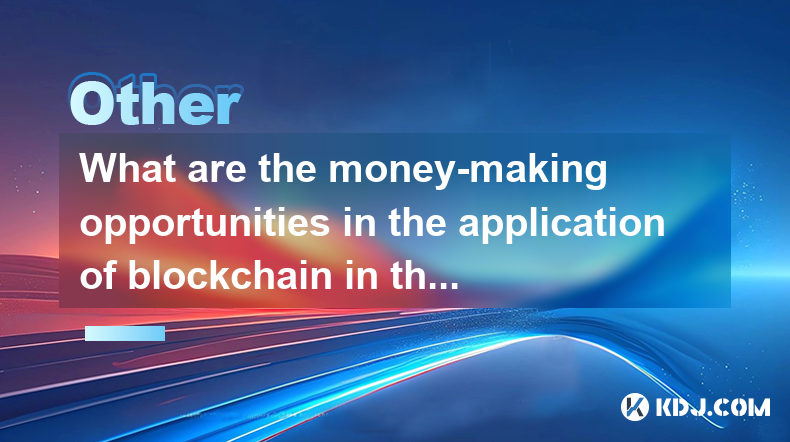
What are the money-making opportunities in the application of blockchain in the field of Internet of Things?
Apr 05,2025 at 10:35pm
The integration of blockchain technology with the Internet of Things (IoT) presents numerous money-making opportunities. Blockchain, with its decentralized and secure nature, can revolutionize how IoT devices interact, manage data, and conduct transactions. This article will explore various avenues where entrepreneurs, developers, and investors can capi...

Is the ranking of Chinese blockchain apps real and reliable?
Apr 04,2025 at 09:01pm
The ranking of Chinese blockchain apps has become a topic of interest for many in the cryptocurrency community, as it provides insights into the popularity and adoption of blockchain technology within China. However, the reliability and authenticity of these rankings are often questioned. This article aims to delve into the factors that influence these ...

What are the future development trends of blockchain game development?
Apr 03,2025 at 05:00am
Blockchain technology has revolutionized various industries, and gaming is no exception. As we look to the future, several trends are set to shape the development of blockchain games. These trends not only promise to enhance the gaming experience but also to integrate blockchain technology more seamlessly into the gaming ecosystem. Let's explore these t...

What are the high-return opportunities for blockchain investments?
Apr 05,2025 at 02:35pm
Blockchain technology has revolutionized the financial world, offering numerous high-return investment opportunities. These opportunities span various sectors within the cryptocurrency ecosystem, including cryptocurrencies, decentralized finance (DeFi), non-fungible tokens (NFTs), and blockchain startups. Each of these areas presents unique risks and re...

What are the maintenance costs of blockchain system development?
Apr 03,2025 at 06:07pm
The maintenance costs of blockchain system development are multifaceted and depend on various factors. These costs can include technical maintenance, security updates, infrastructure expenses, and personnel costs. Understanding these elements is crucial for anyone planning to develop or maintain a blockchain system. Technical MaintenanceTechnical mainte...

What are the money-making models of blockchain games?
Apr 04,2025 at 02:00pm
Blockchain games have emerged as a revolutionary way for players to earn real money while enjoying their favorite pastime. These games leverage the power of blockchain technology to create unique money-making models that benefit both the players and the developers. In this article, we will explore the various money-making models of blockchain games and ...

What are the money-making opportunities in the application of blockchain in the field of Internet of Things?
Apr 05,2025 at 10:35pm
The integration of blockchain technology with the Internet of Things (IoT) presents numerous money-making opportunities. Blockchain, with its decentralized and secure nature, can revolutionize how IoT devices interact, manage data, and conduct transactions. This article will explore various avenues where entrepreneurs, developers, and investors can capi...
See all articles























































































